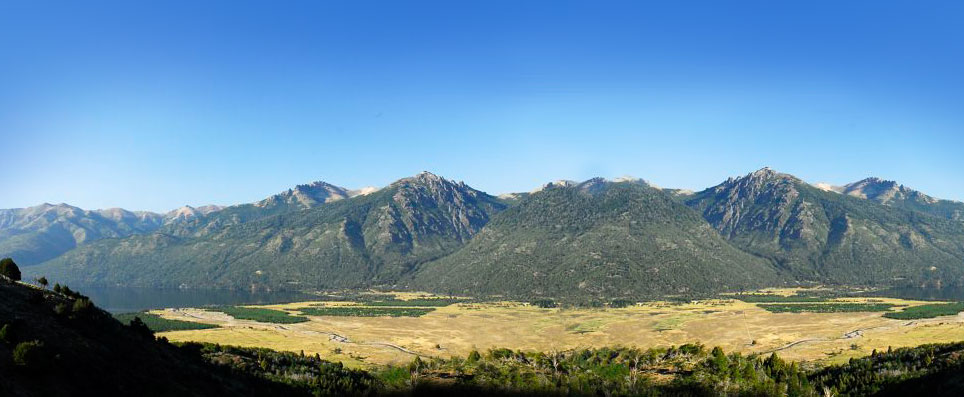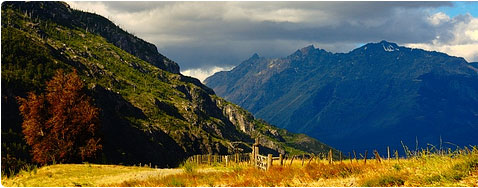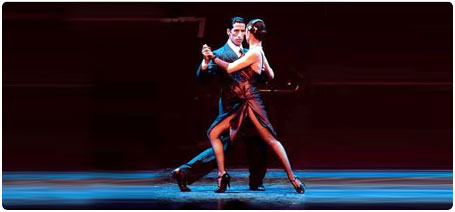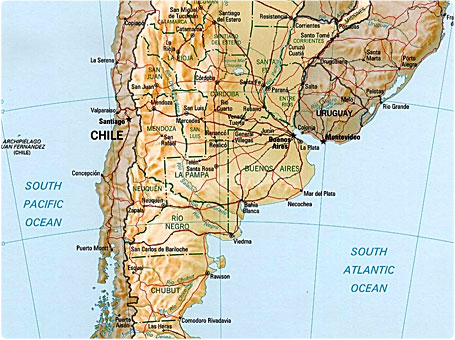

Overview
Location
Argentina is the second-largest country in South America. It is boarded with Bolivia and Paraguay on the north and with Brazil and Uruguay to the north-east. Chile is situated to the west. The eastern side faces the South Atlantic Ocean. The country occupies a strategic position relative to sea lanes between the South Atlantic and the South Pacific Oceans (Strait of Magellan, Beagle Channel, Drake Passage).
![]() Return to top
Return to top
Education
Over 96% of the Argentinians are literate. Education is free and compulsory for children between 14 – 16 years old. In December 2006 the Chamber of Deputies of the Argentine Congress approved a new National Education Law making secondary education obligatory and a right, and increasing the length of compulsory education to 13 years. The government vowed to put the law in effect gradually, starting in 2007. Argentina has 25 national universities and other private universities. The Universidad de Buenos Aires (UBA) was founded in 1821 and is the largest institution of highest education of the country. Other major national universities are the Catholic University of Argentina (1958), the National Technological University (1959) and the National University of C—rdoba (1613). The major library of Argentina is the National Library (1810) in Buenos Aires, with about 2 million volumes.
![]() Return to top
Return to top
Language
Spanish. English is widely used in companies and for business purposes.
Religion
The official religion of the country is the Catholic Church, (95% of the population). However, Judaism, Protestantism, and a number of other Christian and non-Christian religions are practiced since religious freedom is enshrined in the constitution. By law, the president and vice president of Argentina must be Roman Catholic.
![]() Return to top
Return to top

Sports
Football is Argentina's greatest passion. There are 17 stadiums in the city, most of them big enough to allow 40,000 spectators. The pato is the most genuine sport of the country and Argentinian players are considered to be among the best of the world. Other sports: tennis, hockey, rugby, ski, volleyball and basketball.
Argentina National Football Team
![]() Return to top
Return to top
Tourism
Summary
Argentina has been recently discovered by the European tourists; but is already extremely popular among Spanish and Italian visitors. Its wide scope of possibilities – which go from skiing in the beautiful Patagonian winter to the tropical attractions in Jujuy and Salta–satisfy tourists from all over the world. Buenos Aires is a huge city and has a wide range of hotels which are rated according to the number of stars they display (from 5 to 1 in decreasing order).
Hipodromo Argentino De Palermo SA
This horse racetrack opened in 1876, and it's Belle Epoque architecture reflects the grandeur of the sport of kings.
La Recoleta Cemetery
La Recoleta Cemetery is a famous cemetery located in the exclusive Recoleta neighborhood of Buenos Aires, Argentina.
El Zanjon de Granados
Part archaeological museum, part event space, El Zanjón is a beautifully restored mansion encapsulating three centuries of urban living.
El Tigre
El Tigre is an island located in the Gulf of Fonseca, a body of water on the Pacific coast of Central America.
Buenos Aires Zoo
Established in 1888, the zoo is located in the heart of Palermo, next to the Botanical Gardens.
San Telmo
San Telmo is the oldest neighborhood in the city and on Sundays, it becomes the liveliest. A Bohemian fair, featuring live music and street performances.


